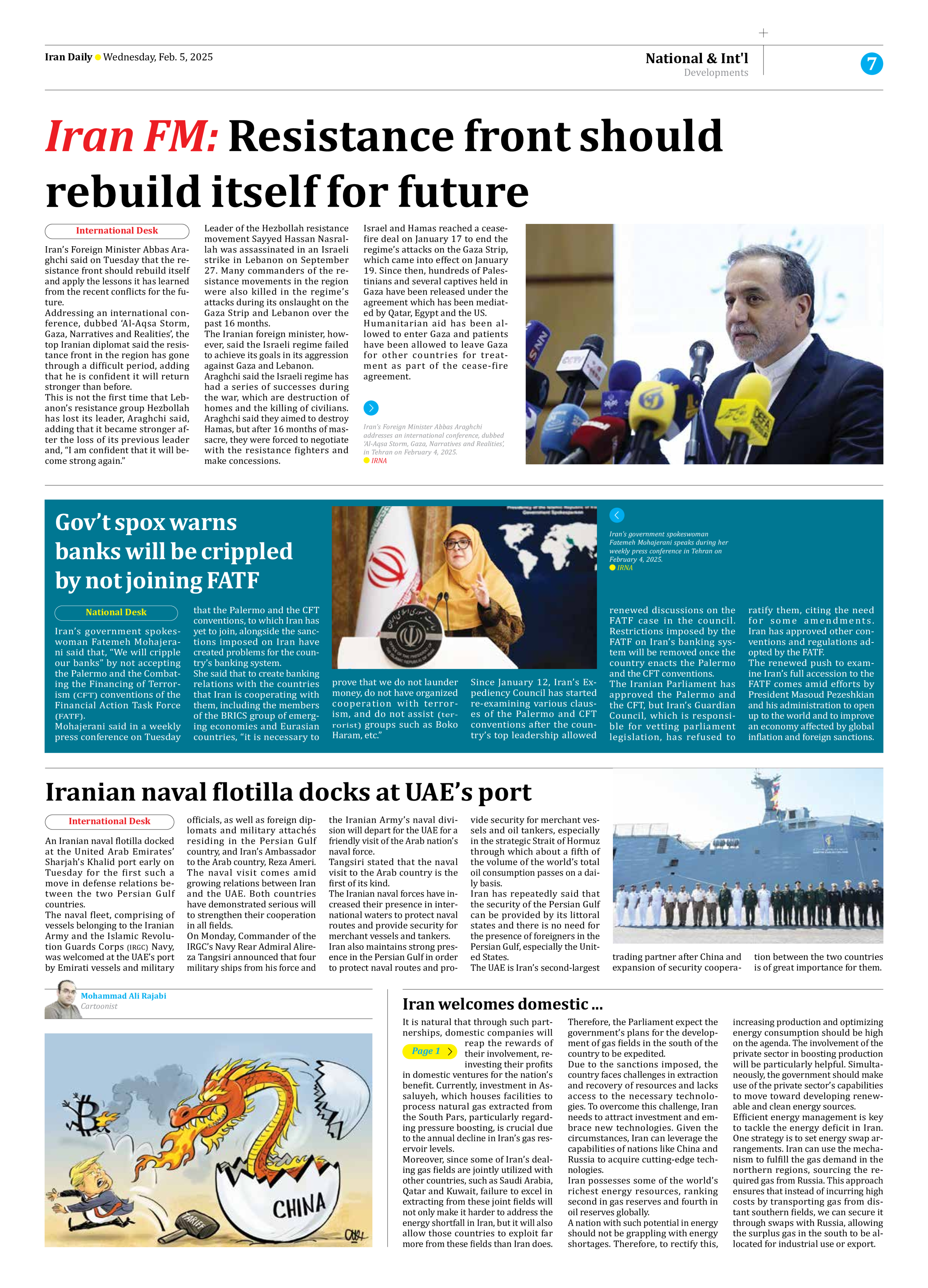
Iran welcomes domestic ...
Page 1
It is natural that through such partnerships, domestic companies will reap the rewards of their involvement, reinvesting their profits in domestic ventures for the nation’s benefit. Currently, investment in Assaluyeh, which houses facilities to process natural gas extracted from the South Pars, particularly regarding pressure boosting, is crucial due to the annual decline in Iran’s gas reservoir levels.
Moreover, since some of Iran’s dealing gas fields are jointly utilized with other countries, such as Saudi Arabia, Qatar and Kuwait, failure to excel in extracting from these joint fields will not only make it harder to address the energy shortfall in Iran, but it will also allow those countries to exploit far more from these fields than Iran does. Therefore, the Parliament expect the government’s plans for the development of gas fields in the south of the country to be expedited.
Due to the sanctions imposed, the country faces challenges in extraction and recovery of resources and lacks access to the necessary technologies. To overcome this challenge, Iran needs to attract investment and embrace new technologies. Given the circumstances, Iran can leverage the capabilities of nations like China and Russia to acquire cutting-edge technologies.
Iran possesses some of the world’s richest energy resources, ranking second in gas reserves and fourth in oil reserves globally.
A nation with such potential in energy should not be grappling with energy shortages. Therefore, to rectify this, increasing production and optimizing energy consumption should be high on the agenda. The involvement of the private sector in boosting production will be particularly helpful. Simultaneously, the government should make use of the private sector’s capabilities to move toward developing renewable and clean energy sources.
Efficient energy management is key to tackle the energy deficit in Iran. One strategy is to set energy swap arrangements. Iran can use the mechanism to fulfill the gas demand in the northern regions, sourcing the required gas from Russia. This approach ensures that instead of incurring high costs by transporting gas from distant southern fields, we can secure it through swaps with Russia, allowing the surplus gas in the south to be allocated for industrial use or export.







